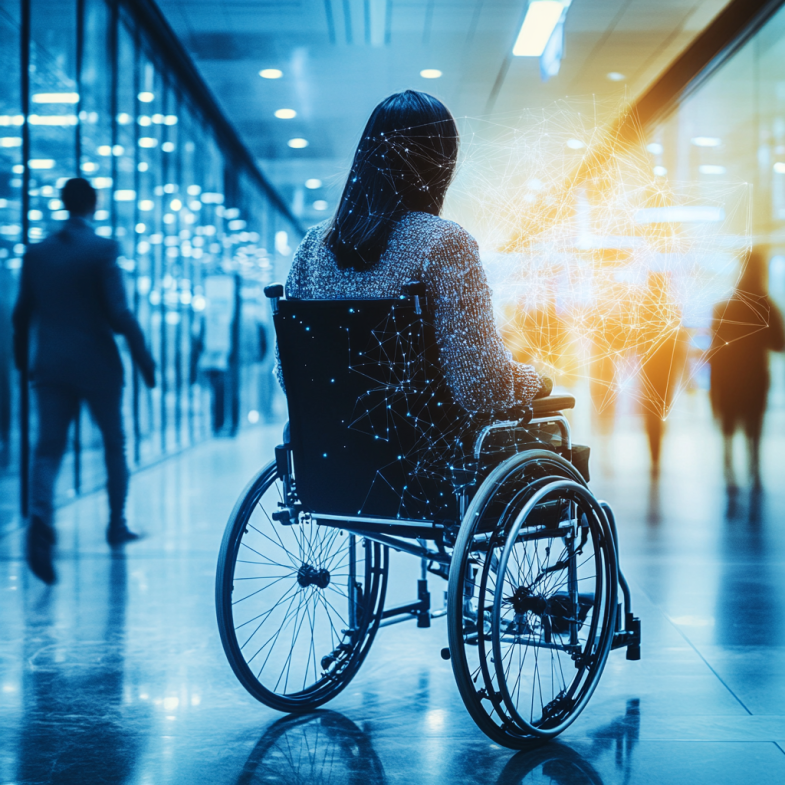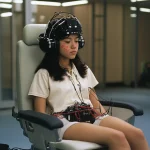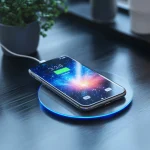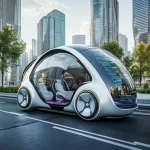Modern technologies open up new horizons for people with disabilities, helping them overcome physical, social and communication barriers. From special devices to innovative solutions in the field of artificial intelligence (AI), technology is becoming an important tool for improving the quality of life and ensuring equal opportunities for everyone. In this article, we will look at examples of devices and solutions that make the lives of people with disabilities more convenient and fulfilling.
Chapter 1: Smart Prosthetics and Bionic Devices
Bionic Limbs
One of the most significant advances in medical technology is bionic prosthetics. These devices allow people with amputated limbs to regain lost functions and lead active lives. Modern bionic arms and legs are equipped with sensors that can read signals from nerves and muscles, allowing users to control the movement of the prosthesis with their thoughts. For example, Open Bionics develops lightweight and affordable prosthetics that can be customized to the specific needs of each user.
Artificial Organs
Technology is also advancing in the area of artificial organs. For example, artificial eyes and hearing aids are already helping many people with visual and hearing impairments. Some companies are working on creating fully bionic eyes that can replace damaged parts of the retina and restore vision to people with serious eye diseases. This could dramatically change the lives of people with complete or partial blindness.
Chapter 2: Assistive Technologies for Mobility
Smart Wheelchairs
For people with musculoskeletal disorders, smart wheelchairs are becoming increasingly popular. These devices are equipped with modern control systems such as voice control, joysticks, and even facial recognition systems. Smart wheelchairs can automatically avoid obstacles, build routes, and even connect to the Internet of Things (IoT) to interact with other smart devices. Whill has developed a wheelchair that can move independently, following the user or a pre-set route.
Powered Exoskeletons
Powered exoskeletons are devices that help people with mobility impairments walk. These devices support the human body and help it move using motors and sensors that respond to the user’s movements. Exoskeletons can be used not only to help people with disabilities, but also for rehabilitation after injuries and surgeries. ReWalk Robotics has created an exoskeleton that allows people with paralysis to walk without assistance.
Chapter 3: Technologies for Communication and Interaction
Voice Assistants and AI
Voice assistants such as Amazon Alexa, Google Assistant, and Apple Siri are becoming increasingly accessible to people with disabilities. These devices can perform many tasks, such as sending messages, searching the web, and controlling smart devices in the home, using only voice commands. For people with visual and hearing impairments, voice assistants can be a real lifesaver, allowing them to remain independent and communicate with the world.
Communication Devices
There are specialized devices and applications for people with speech impairments and other forms of communication barriers. For example, devices with text-based screens and speech synthesizers allow people with speech impairments to communicate with others. The Proloquo2Go app allows users to compose messages from a set of symbols and words, which are then converted into speech. This is especially useful for people with autism and other developmental disabilities.
Chapter 4: Education and Work
Adaptive Devices for Learning
Technology also plays an important role in the education of people with disabilities. Adaptive devices, such as touchscreen tablets and read-aloud software, help children with visual and hearing impairments learn on par with their peers. For example, the Dragon NaturallySpeaking program allows users to dictate text that is automatically converted into written format. This is especially useful for people with limited motor skills.
Robotic Assistants
Robot assistants are becoming increasingly popular in work and learning environments, helping people with disabilities perform everyday tasks. For example, robots can help with carrying heavy objects, performing routine tasks, and even learning new skills. Toyota has developed a robotic assistant that can help people with disabilities at home and at work, ensuring their independence and comfort.
Chapter 5: Social Inclusion and Accessibility
Infrastructure plays an important role in ensuring accessibility for people with disabilities. Smart traffic lights equipped with audible signals and tactile buttons help people with visual impairments cross the road safely. Smart bus stops and metro stations are equipped with information boards and voice instructions that help navigate the space. This promotes the social inclusion of people with disabilities and creates a more inclusive society.
Online platforms and communities
Online platforms and communities are becoming an important means for the social inclusion of people with disabilities. Social networks, forums and chats provide an opportunity for people with disabilities and their families to communicate and share experiences. Platforms such as Disability Horizons offer information on new technologies, events and opportunities for people with disabilities, promoting their social activity and self-esteem.
Technology plays a key role in breaking down barriers for people with disabilities, helping them lead full and independent lives. Smart prosthetics, adaptive devices, voice assistants and other innovative solutions open up new opportunities for millions of people around the world. However, it is important to continue developing these technologies and making them accessible to everyone who needs them. Only together can we create a more inclusive and fair society.






